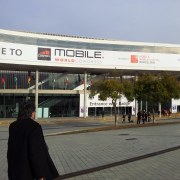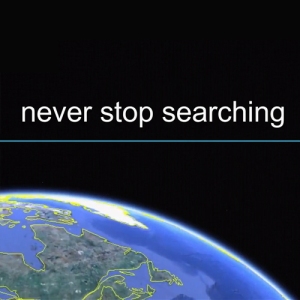Magnet Tablets: LUST
LUST: Fujitsu Iris Transparent Tablet
This concept tablet, designed by Liu-Wei, Yao Kai-Chi, Hong Ruei-Hong & Cheng Ya-Fang of Yanko Design, is a transparent touchpad with an OLED display.
Although not available commercially, it does give us a sexy peek into the future.
So why lust after it?
Well, it gives an experience that beats any you’ve ever had. Using wireless technology, it can charge, scan, translate, or navigate with just a point or a touch. It supports Augmented Reality (see photo) and a split screen for two users to use simultaneously.
While we wait for it to hit the market, a similar concept that has already been unveiled is a Transparent Samsung Notebook introduced at CES 2010.
Magnet Tablets: NEED
NEED: Military DACS Tablet
This portable DACS (Digital Army Computer System) was developed to support military command and control. Integrated with a GPS receiver and customized interface panel, the tablet is mounted on a wearable dock carried on the chest, enabling the soldier to pull it from the vehicle straight into his dock vest, with no loss of data. It’s mission is to provide the commander in the field a complete picture of the situation, including location, data intelligence, enemy spotting, and locating additional forces in the field, dramatically reducing the risk of friendly fire.
So what do we need this for?
Well we don’t, but the US and Israeli armies have integrated it into the field. With its modular architecture allowing integration of communications, networking, positional information (GPS) and data acquisition, it provides the required real-time situational awareness the fighting forces so dearly need. It’s ultra-rugged design permits soldiers to carry it through extreme conditions, including extreme temperatures and water. And it can supply almost nine hours of operation.
Magnet Tablets: WANT
We start the month of February with a new theme. Want, Need, Lust presents (in a series of 3 posts to make them shorter and easier to digest) products and services within specific domains via an axis of desirability, ranking them and defining the strategy that gives them their lustre. Enjoy! And please feel free to add your own…
Our first series is the world of tablets, no doubt the rising star of the times. The tablet market doubled in size in 2012, led by Apple’s iPad. The tablet space, however, has triggered a fierce battle between countless manufacturers, resulting in surprisingly low prices and unprecedented sales. Here are a few that are outstanding in respect of the want, need, lust spectrum.
WANT: Google’s Nexus 7
Revealed on June 27, 2012, the first device using Android’s “Jelly Bean” operating system, the Nexus 7’s effect on the market was felt that same afternoon, prompting an 0.8% increase in Google’s shares. Labeled the “undisputed king of the hill”, estimates suggest that Google sold between 5 and 8 million units in just 6 months. With a myriad of accolades, including “Gadget of the Year”, it ranked among the most influential products of 2012.
So what is it about it that made such a bang?
Well, marketed heavily as an entertainment device, it facilitates multimedia consumption of e-books, television programs, films, games, and music. But most importantly, with a high-quality screen, quad-core processor (that’s super strong and very fast), built-in camera and multiple communication modes, the Nexus 7’s greatest feature is its price point: a mere US$199.
Au Revoir
Well, how many of you noticed the date today? 31.1.13 ! Nice,huh? And how fitting for the grand finale of 2012.
Happy New Year, Goodbye 2012 (10)
2012 was full of surprises – good and bad. But innovation was a theme that ran all through the year. In the hope that 2013 will be just as innovative, if not more, with music by Kodaline, and video production by Whirled Creative, Google pulled together a great summary of our search trends labelled “Zeitgeist 2012“.
Without further ado, I present you with a truly inspiring video that exhibits the people, events, places and moments that made a difference to us in 2012.
To view the video, click on the image.
< previous > Article 10 of 10
See you next month with a new series titled “Want, Need, Lust”…
Size Matters
While manufacturers are battling over your eyeballs, and the phrase “ubiquitous connectivity” has passed from this world even before anyone had a chance to learn what it means, there is one screen that is truly u·biq·ui·tous (adj. present, appearing, or found everywhere. Synonyms: omnipresent).
The screen in EVERYONE’s living room. The screen that, no matter how many devices per household, still gathers the clan every evening and still has the best view in the house. The screen that is truly HD, 3D, surround sound, and all the rest of it. The screen that reaches dimensions that make sitting on the sofa more attractive than ever. Yes, we just might be getting fed up with mobility…
Happy New Year, Goodbye 2012 (9)
“Fiddling around with screen sizes has played havoc with device categories,” says Matt Ablott in a recent blog post. “First we had the smartphone… then we had the tablet… More recently we have seen vendors target devices in the midrange between the two… With smartphones getting larger and tablets getting smaller it probably won’t be long before the two form factors trade places in terms of sizing.”
In the television category, however, there is no dilemma as to which is better (bigger or smaller). And when TV sizes start to get preposterous (Samsung exhibited a 110-inch behemoth at CES in Las Vegas), the message is clear: size matters!
And in the age of the SmartTV, ubiquity comes with a brain! Not only is the TV a household feature that has a penetration rate of 98% in the industrialized world (as compared with 71% PC, 55% smartphone, and only 5% tablet penetration). It also possesses all the features we have come to expect of our smart devices: internet, apps, social media, etc.
When the connection between the two is complete, and families or friends sitting infront of their TV screen interact using their “other” smart devices, the circle will be complete. The combination of public and private displays will allow our multi-tasking, content-hungry, ADD generation to watch, engage, and socialize simultaneously.
And then what will mobility look like? Maybe varied locations with the same constellation (ultimate experience = big screen + many little screens). Weboolu’s Virtual Entertainment Console is a living example!
< previous > Article 8 of 10 < next >
Chuang Jien!
(for those of you wondering, Chuang Jien is Chinese for Innovate)
As the second largest country in the world, and the most populated with a potential local market of 1.3 billion (2012 census), China’s technological clout has never been in question.
500 m internet users, 300 m mobile internet users, 900 m mobile subscribers, a mobile internet market of $1.7 b, and a “demo-to-download” speed of less than 3 months.
Happy New Year, Goodbye 2012 (8)
China’s biggest strength has become applying concepts to a creative and uniquely Chinese context. They have an eagerness to learn, the audacity to take risks, and the sincerity to admit what works and drop what doesn’t. Facebook and Zynga, for example, are actually learning from the mistakes and successes of Chinese monetization experiments,which span an unprecedented spectrum.
Having invented the printing press, compass, and gun powder, it is no surprise that scientific self-sufficiency is China’s goal. But while their strategy to transform from “serving as the world’s factory” to “becoming pioneers in global innovation” is impressive, their homegrown scientists have too often been labelled blatant technology thieves.
With 40% of Chinese games on Android, and 20% on iOS, clearly copycats, the Chinese define themselves as having an unrivaled imagination in 2nd generation innovation, namely making incremental improvements and adaptations for the Chinese market.
Before we accuse them of stealing our intellectual property, let’s look at many of the Western innovations that we worship: the Palm Pilot vs. the Newton, the iPod vs. the Rio, Facebook vs. MySpace,…
Reality Bites Back
Reading an ezine is convenient, but reading the latest physical edition of VOGUE is all about pleasure. Purchasing music on iTunes is quick and easy, but spending hours at a Virgin Megastore is close to heavenly. There is something about the digital experience that, no matter how popular or intuitive, still lacks the flair that reality provides.
Happy New Year, Goodbye 2012 (7)
There are characteristics of digital experience, however, that leave reality in the dust. Spontaneous discovery, for example, that permits us to get contextual information about the world around us.
As you hold the smartphone’s camera up to a painting in a museum, Augmented Reality should automatically understand what you are looking at and show you all the information about its context: the work of art, the artist, opening hours, the museum shop, etc.
From a report by Fjord and 13th Lab, “it is not about creating a new Internet for reality, it is about connecting the existing one to reality. Just as most Internet properties now have a mobile version of their web page and user interface, we believe they will eventually have a “reality” version of web page adapted to be rendered on top of reality.” To read more about the report, click on the image.
Augmented Reality’s developers, users, and publishers need to remember, however, that it’s not just about gaming…
























